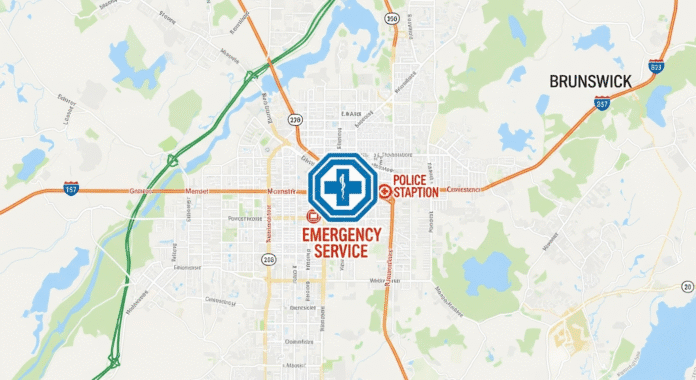Brunswick Moves to Create Ambulance District to Address Emergency Response Delays
By David LaGuerre
Brunswick, a town in Rensselaer County, is taking decisive action to address long-standing concerns over emergency medical response times. Following increasing community pressure and recent developments in neighboring municipalities, town officials are preparing to establish a new ambulance tax district with the goal of ensuring faster and more reliable EMS services for residents.
What’s Driving the Decision?
The catalyst for Brunswick’s proposed ambulance district lies in persistent frustrations over delayed emergency responses. Residents have voiced repeated concerns about the inconsistency and slowness of current services, which are provided primarily by Mohawk Ambulance. Town Supervisor Phil Herrington highlighted instances where the designated provider was unavailable, resulting in delays that could put lives at risk.
This isn’t just about convenience — it’s about safety. When every second counts, especially in cases of cardiac arrest, stroke, or severe trauma, even a few extra minutes of waiting can mean the difference between life and death.
The Proposal: A New Tax District with Dedicated Services
Under the new plan, Brunswick would create a dedicated ambulance tax district funded through a property tax increase of approximately $3 per $1,000 of assessed property value. For the average homeowner, this represents a modest additional cost that could translate into a massive improvement in public safety.
According to town officials, the tax district would bring in an estimated $875,000 annually. This funding would support the hiring of a new EMS provider or potentially building capacity for a local municipal ambulance service.
If approved, the ambulance district could be up and running by August 2025.
Community Support and Regional Momentum
During a recent public hearing, residents overwhelmingly backed the initiative. Many shared personal experiences of delayed ambulance arrivals, reinforcing the urgency of the issue. Supervisor Herrington noted that while some feared the introduction of a new tax, the tradeoff in improved emergency care was seen as overwhelmingly worthwhile.
Brunswick’s move mirrors similar action taken in Poestenkill earlier this year, where that town created its own ambulance district to solve nearly identical problems. The trend suggests a regional reckoning with the limitations of relying on private EMS providers stretched too thin to meet rural and suburban demand.
What’s Next?
The next steps involve finalizing legal procedures for district creation, confirming a provider, and setting operational logistics. The town will also launch educational outreach to help residents understand how the new tax will work and what improvements they can expect.
Importantly, officials stress that the new district will provide dedicated coverage for Brunswick — meaning the provider will have a contractual obligation to prioritize the town’s emergencies rather than covering a broad, regional territory.
A Broader Look: EMS Challenges Across New York State
The situation in Brunswick isn’t unique. Across New York, towns are grappling with similar dilemmas. A 2023 report from the New York State Association of Counties (NYSAC) noted that over 60% of counties had raised flags about insufficient ambulance coverage, especially in rural areas.
Key challenges include:
- Understaffing: Many EMS services struggle to hire and retain paramedics.
- Funding gaps: Unlike fire departments or police, EMS often lacks stable, public funding.
- Privatization problems: Private companies may prioritize profitability, leaving low-volume areas underserved.
In this context, Brunswick’s proactive approach could serve as a model for similar communities seeking local control over critical health infrastructure.
Final Thoughts
The move to establish an ambulance district in Brunswick is more than a bureaucratic reshuffle — it’s a community-driven step toward public safety and accountability. As healthcare access becomes an increasingly urgent topic at both local and national levels, solutions like these, grounded in local leadership and resident feedback, point the way forward.
If successful, this initiative could lead to improved outcomes for those facing life-threatening emergencies and restore public confidence in the systems designed to protect them.
Have a thought on this story? Leave a comment or share it with your network to keep the conversation going.




